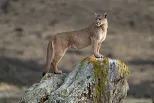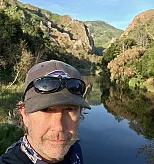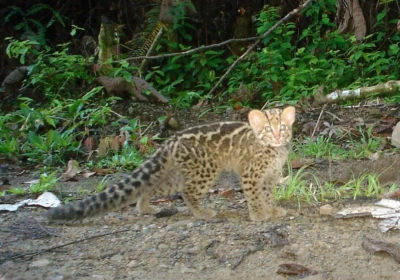
Fig the leopard on the hunt in Masai Mara, Kenya, 2017. Photo courtesy of and copyright © Sharon Osberg of Wild World Foto. Used with permission.
Science & Research
Wild cat conservation starts with innovative and forward-thinking science and research.
Our Innovative Approach
Our innovative wildlife conservation approach involves forward thinking research, technology, and education. We avoid invasive practices, such as collaring or tagging. Instead, we work alongside wildlife within their ecosystem. This way, we conduct world-class research and change the way we interact with wild cats.
Wilde Pod
We have built a database repository for wildlife imagery collected on public, state, county, city and private lands. Our work is focused on conservation of wild felids but we collect images of all wildlife for use in research and land planning.
Wild Cats of the Coast

Felidae Conservation Fund joins the Coastside Land Trust community webinar series to talk about the wildcats of Coastal San Mateo. Within this talk, we learn about their biology,...
Living with Pumas in the SF Bay Area

People in the Bay Area are having many more sightings of mountain lions but the question is, are there more of them, are we seeing the same ones,...
Knowing Wild Cats: Non-Invasive Data Collection for Researchers

Covers non-invasive research methods with lead wildlife biologist Courtney Coon, PhD and BAPP head researcher, Zara McDonald.
Scat DNA Applications for Low-Density Carnivore Survey: Techniques, Efficiency and Future Directions
; 2025

Large and mesocarnivores often occur at low densities due to both natural factors and human activities. Consequently, the noninvasive collection of carnivore data, such as scats for genetic...
Cheetah’s Last Great Refuge
; April 1, 2025

In the heart of Kenya, where vast savannas meet rugged terrain, the biodiversity-rich Tsavo ecosystem stands as one of East Africa’s last great refuges for the...
Petaca, a Chilean Beauty
; February 6, 2025

Patagonia in Chile is a magical place famous for its jagged peaks, vast grasslands, and howling winds. It is also home to one of our most adaptable land...
The "Ghost Cats" of the Santa Monica Mountains

Documentary by Michael Harris. Michael has been working with biologists from the National Park Service for two years, documenting the mountain lion study, which has been ongoing since...
Puma Wild

From Conflict to Co-existence. Tree and Sky Media Arts have produced the first of two short films for Felidae outreach efforts. The short music video is designed...
Trail of the Puma

David Elkins and Aneeta Akhurst. Totem Pictures A one-hour film that will reveal new insights into the natural history of this iconic, top-level predator,...
Do You Have 2-4 Hours A Month To Preserve Your Local Ecosystem?
Our volunteers are the driving force behind making true change in ecosystem health and wild cat conservation. Some like to volunteer in the field, others help us maintain our online presence, and some work with events. With just a few hours a month, you can make a difference, too.
Make A Difference Right Now
As a 501(c)3 nonprofit, our work is only possible because of generous donors like you.
More than 90% of your donation will go directly to our groundbreaking research, outreach, and education programs.
This is where true change starts. If you’d like to be a part of it, make a donation to Felidae Conservation Fund today:
Or,



